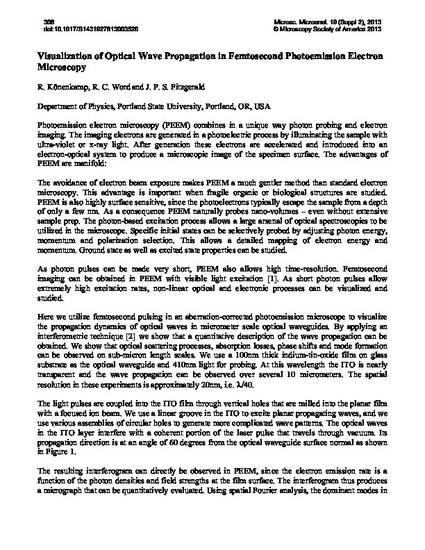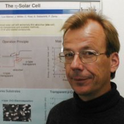
- Optoelectronics,
- Optical wave guides -- Mathematical models,
- Femtosecond lasers
Photoemission electron microscopy (PEEM) combines in a unique way photon probing and electron imaging. The imaging electrons are generated in a photoelectric process by illuminating the sample with ultra-violet or x-ray light. After generation these electrons are accelerated and introduced into an electron-optical system to produce a microscopic image of the specimen surface. The advantages of PEEM are manifold:
The avoidance of electron beam exposure makes PEEM a much gentler method than standard electron microscopy. This advantage is important when fragile organic or biological structures are studied. PEEM is also highly surface sensitive, since the photoelectrons typically escape the sample from a depth of only a few nm. As a consequence PEEM naturally probes nano-volumes – even without extensive sample prep. The photon-based excitation process allows a large arsenal of optical spectroscopies to be utilized in the microscope. Specific initial states can be selectively probed by adjusting photon energy, momentum and polarization selection. This allows a detailed mapping of electron energy and momentum. Ground state as well as excited state properties can be studied.

The original publication is available at http://journals.cambridge.org
Copyright 2013 Microscopy Society of America. Published by Cambridge University Press.